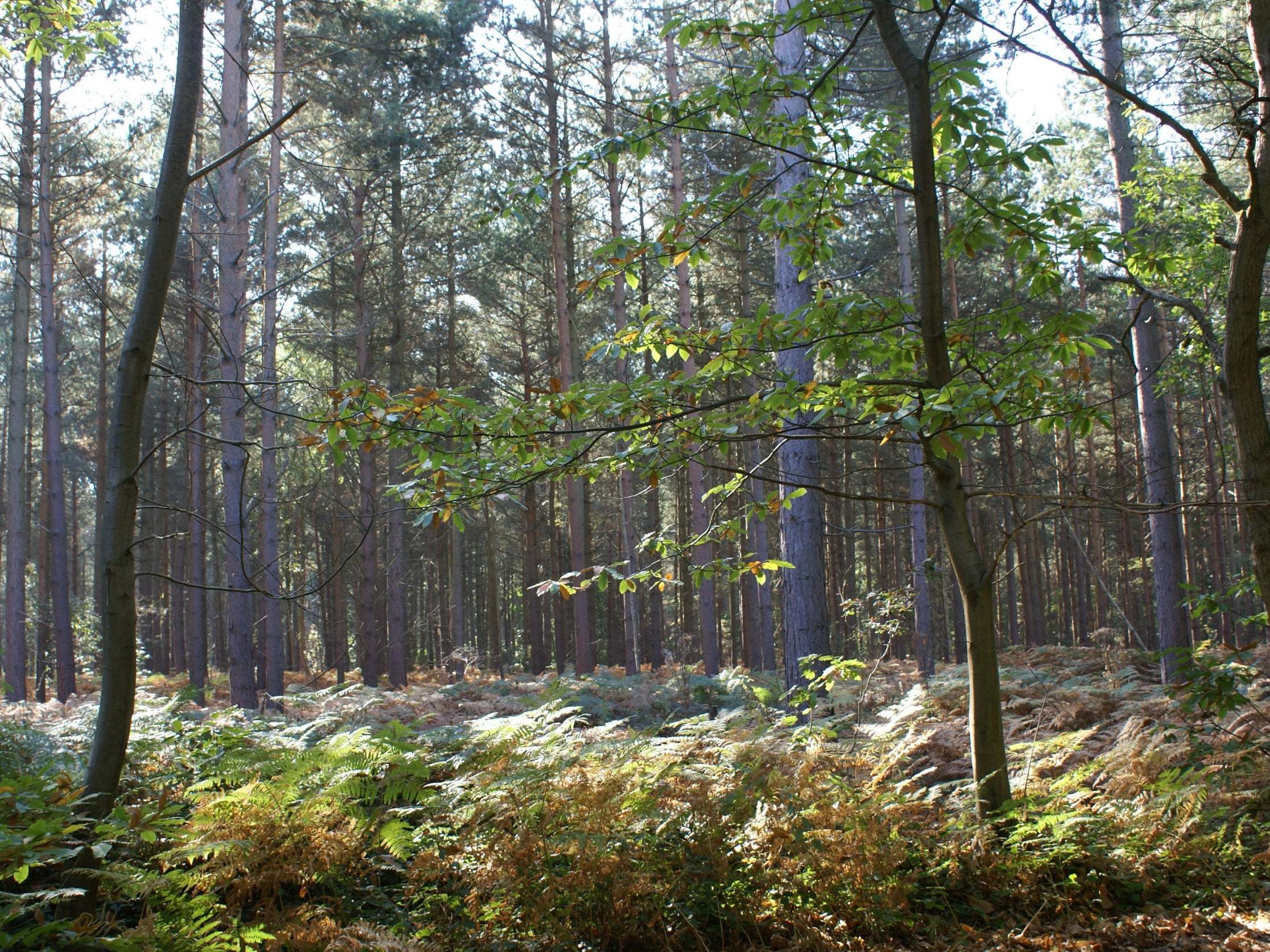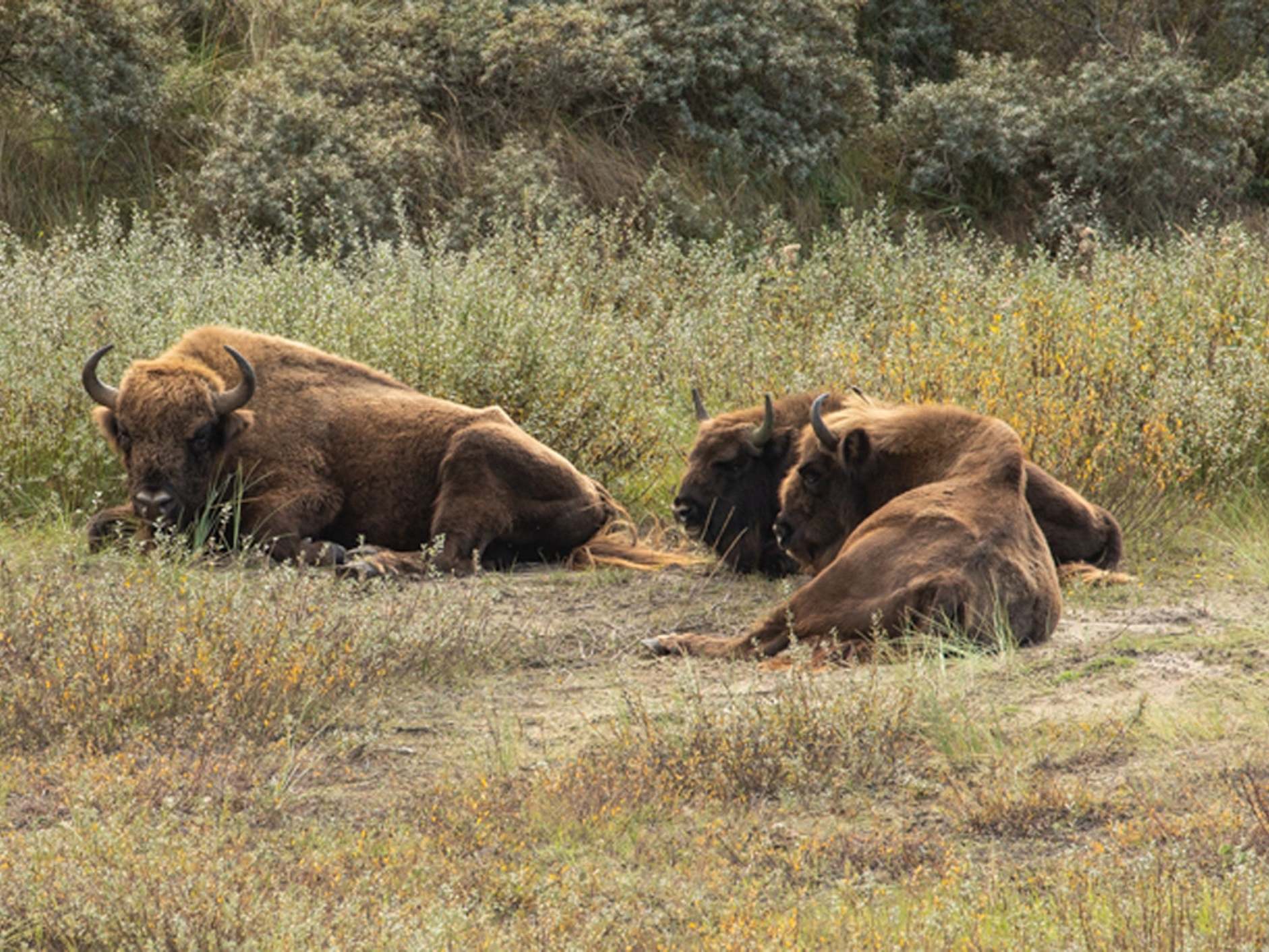Bison brought back to UK for first time in thousands of years
Conservationists hope Europe’s largest land mammal will help restore ancient habitat and wildlife
Bison are being introduced to a British woodland to restore an ancient habitat and its wildlife, conservationists have said.
The move is part of a £1 million project led by Kent Wildlife Trust and the Wildwood Trust to help manage Blean Woods near Canterbury, Kent.
European bison, the continent’s largest land mammal, are the closest living relative to ancient steppe bison that would have once roamed Britain and naturally managed the habitat, conservationists said.
A closely-knit herd of four European bison will be introduced into a fenced enclosure away from public footpaths, in what is the first time the animals have been introduced to a nature reserve to help wildlife in the UK.
They will be within a wider 500 hectare (1,200 acre) area which will also use other grazing animals such as Konik ponies to create varied and healthy habitat.
Despite their size, with adult males weighing up to a tonne, bison are peaceful, according to the experts, and no other species can perform the job of engineering the habitat in quite the same way.
They fell trees by rubbing up against them and eat bark, creating areas of space and light in the woods and providing deadwood which will help other plants and animals.
Kent Wildlife Trust said patches of bare earth created by the bison “dust bathing” would be good for lizards, burrowing wasps and rare arable weeds, while bark stripping would create standing deadwood that benefits fungi and insects such as stag beetles.
And more light to the woodland floor helps plants such as cow wheat, which the heath fritillary – a rare butterfly found in Blean – depends on.
In the UK, lack of woodland management is one of the eight biggest drivers of species decline, according to the Wildwood Trust.

Bison releases have been successful in other countries to help boost wildlife and give people a wilder experience in the countryside, conservationists said.
The project is funded by £1,125,000 from the People’s Postcode Lottery Dream Fund, created to give charities and good causes the opportunity to deliver their dream project over a two-year period.
Kent Wildlife Trust, which owns several woods in the Blean area, one of the largest areas of surviving ancient woodland in England, will be responsible for the overall management of the project.
Wildwood Trust, a native species conservation charity, will be looking after the animals and ensuring their welfare, while the scheme will involve extensive consultation and engagement with the local community and monitoring of the bison.

Paul Hadaway, director of Conservation at Kent Wildlife Trust said: “The Wilder Blean project will prove that a wilder, nature-based solution is the right one to tackling the climate and nature crisis we now face.
“Using missing keystone species like bison to restore natural processes to habitats is the key to creating bio-abundance in our landscape.”
Paul Whitfield, director general of Wildwood Trust said: “The partners in this project have long dreamt of restoring the true wild woodlands that have been missing from England for too long.
“This will allow people to experience nature in a way they haven’t before, connecting them back to the natural world around them in a deeper and more meaningful way.”
Press Association
Join our commenting forum
Join thought-provoking conversations, follow other Independent readers and see their replies
0Comments